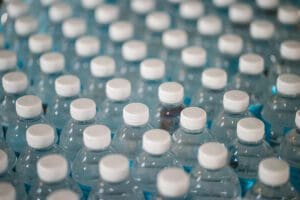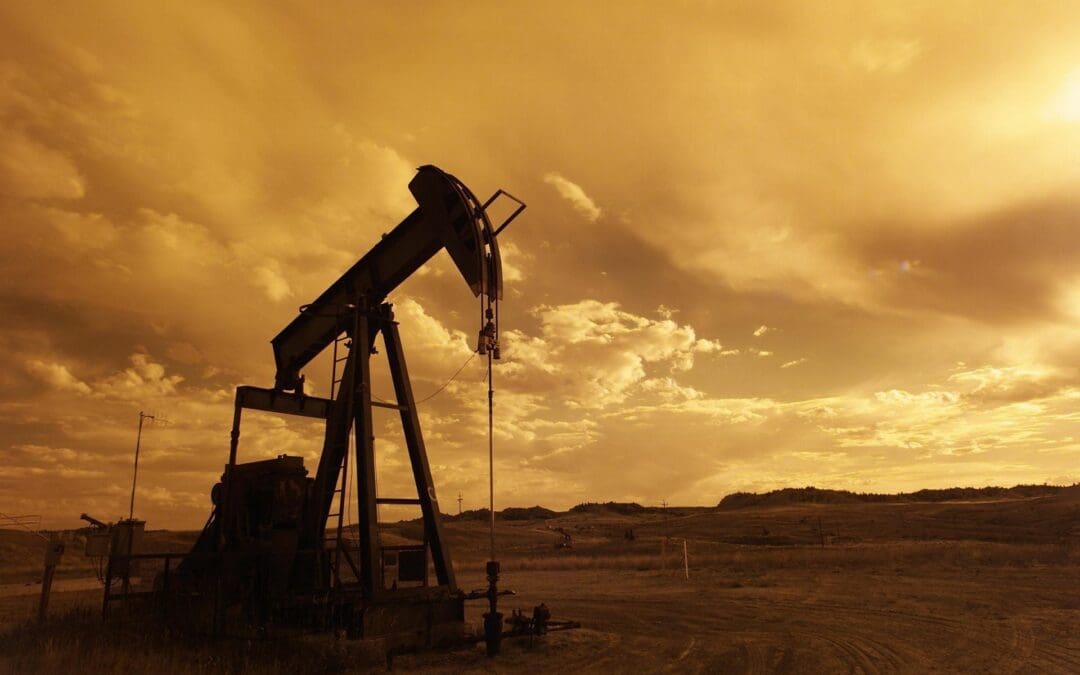Plastic. It’s everywhere. The pervasiveness of plastic is so ubiquitous that a recent study has shown that humans ingest on average “the equivalent of a credit card’s worth of plastic every week.”
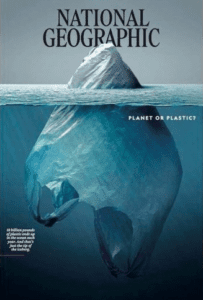
How, and why are we ingesting so much plastic? The answer is long and complex and goes far beyond our habit of using disposable straws. And the answer is… water. “The single largest source of plastic ingestion is through water, both bottled and tap, all over the world.”
And that leads to the question: How has plastic contaminated the majority of our water supply? And, how can you avoid plastic in your drinking water? FreshPure® Waters offers a solution that not only ensures you drink plastic-free water, but also pushes against the plastic issue by producing only bulk water. Our customers have saved over 100 million single use plastic bottles from entering the waste stream by simply bringing bottles from home to fill up at our dispensers. As awareness of this issue grows, we hope that the amount of plastic our company saves will grow as well.
Over the next few weeks, we’ll focus on how plastic impacts our water sources from production to the waste stream.
The Big Picture
Plastic has its place. Sanitized, single-use medical equipment saves lives. Sanitized, waterproof clothing and shelter are also important uses for plastic. Food can be kept in air-tight packaging, therefore lasting much longer and extremely useful in an emergency. Prosthetic limbs carefully crafted to fit the body dramatically improve quality of life. In these ways, plastic is a hero. However, now that we are beginning to understand how detrimental plastic is to our environment and individual health, it’s time to let go of plastics used simply for convenience.
Some Statistics
- As of 2013, the US has produced 49 million tons of plastic.

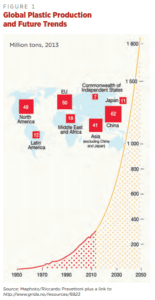
- Worldwide, 150 million tons of single-use plastic is produced yearly.
- Only 10% (15 million tons) gets recycled
- Americans used 50 billion single use plastic bottles in 2018.
- Over 8 million tons of plastic go into the ocean every year worldwide.
- Beverage Bottles account for 12% of unrecycled plastic products.
- Bottle Caps account for 17% of unrecycled plastic products.
- Recent studies showed 83% of tap water contaminated with plastic worldwide.
- 94% of United States tap water is contaminated with plastic.
- Study showed 93% of bottled water contaminated with plastic. Study conducted across 11 brands in 9 countries.
Plastic Step by Step
Plastic negatively impacts human and planetary health at every stage of its lifetime. In order to understand the impact of plastic at each stage, we’ll break down environmental and health effects of sourcing raw materials, production, products made, disposal, and degradation.
The Source: Fossil Fuels
So, where does plastic come from? This pliable, strong, versatile material permeates our culture, but few of us actually know where it comes from and how it’s made.
Although plastics are made from a variety of materials including cellulose, coal, and salt, the most common base materials used are crude oil and natural gas. When mistakes are made, extracting crude oil and natural gas impacts our water supply directly. For example, of 58 peer-reviewed studies on water quality near oil and gas production sites, 40 show water contamination.
How do we extract Fossil Fuels from the earth?
- Drilling for Crude Oil
- Hydraulic Fracturing aka Fracking
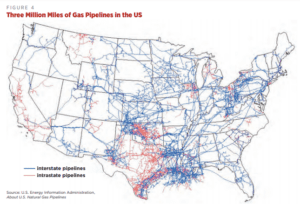
Effects of Oil Drilling on Groundwater
There are 96,000 active oil and gas wells on public lands in the US. In addition to the oil spills we have all heard about such as the 2010 Deep Horizon drilling rig explosion in the Gulf of Mexico and 1989 Exxon Valdez oil spill in Prince William Sound, Alaska, and several explosions of cargo trains carrying oil which seep into groundwater sources, a lesser known concern is well-water contamination.
Well water contamination is problematic in communities near drilling sites. Pennsylvania, Ohio, West Virginia, and Texas are all areas where oil drilling has contaminated well water. This can happen even when drilling sites are built and operated correctly.
Pipeline explosions and damaged wells can also contaminate underground aquifers.
What is Hydraulic fracturing?
Hydraulic fracturing, or fracking, is used to produce oil from shale and other tight geologic formations (aka: variations of rock). After drilling into the earth, a combination of water, sand, and chemicals are injected into the well at high pressure to create small fractures in shale and rock. This allows natural gas to come up through the well.
Ethane, a component mixed in with natural gas, is removed and processed into ethylene, which links together to make polyethylene, a common type of plastic.
Effects of Fracking on Groundwater
Hydraulic Fracturing of slate and rock requires 1 million gallons of water per injection and uses potentially hazardous chemicals in the process of releasing oil from underground. This can lead to both water shortage and contamination.
- Leaks & Spills: Fracking wells and gas pipelines can both leak and spill, contaminating groundwater, including aquifers, rivers, and lakes.
- Wastewater: Hydraulic fracturing also produces large amounts of wastewater that may contain contaminants such as naturally radioactive radium. This water must be treated prior to disposal or reuse.
- Depleted Water Supply: This is extremely dangerous in areas that are already arid, such as Northern New Mexico.
- Earthquakes: Wastewater is frequently disposed of by injection into deep wells, typically into saltwater aquifers. The injection of wastewater can cause earthquakes that may cause damage and are large enough to be felt.
- Historic Sites at Risk:
FreshPure® Waters’ Role in the Plastic Crisis
Right from the beginning of the cycle, plastic production puts water sources at risk. That’s why FreshPure® Waters chooses to sell bulk water only, not bottled. We not only offer our customers a high-quality, safe, daily drinking water free-of plastics, but a way to become part of the solution by reusing bottles.
Tune in next week as we continue our plastic deep-dive into Production and Products.
